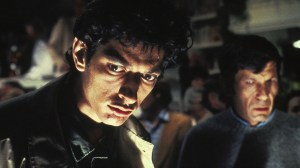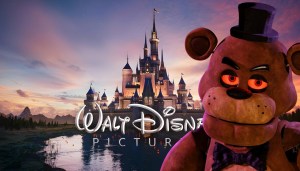Director Jon Favreau has detailed the elaborate, high-tech process used to bring photo-realistic animals to life in Disney’s re-imagining of The Lion King.
Videos by ComicBook.com
First footage screened at Disney’s D23 Expo in 2017 was “relatively early footage, rushed for that event, because we wanted to get it out,” Favreau told Collider during a Spider-Man: Far From Home set visit. Despite that enticing tease, “We’re really giving [the artists] time to do it right.”
“But I’m here working with them. It’s a lot of the same people we worked with on Jungle Book,” Favreau said of Disney’s own 2016 blockbuster awarded the Oscar for Best Visual Effects.
“There was probably a big learning curve for me on that one, and now I’m up to speed, and I’m used to working with all of them, and I know what the tech can do, and it’s all new tech. A lot of the consumer facing VR stuff that’s out there that wasn’t out there back around the time of Jungle Book, we’re using mostly motion capture tech, and now using game engine tech and consumer facing VR stuff we’re able to create virtual production.”
That process, earlier described in-depth by visual effects supervisor Rob Legato, is a “very cool, efficient way of working,” Favreau said.
“It helps contribute to a live action feel, because we’re able actually to go into VR and set cameras and operate real cameras that drive virtual cameras, so it has a look that hopefully will feel photo real, even though everything’s animated and it still should have a look of a live-action film. You’ll see. You’ll be the judge. That’s the plan.”
Legato in November told The Hollywood Reporter Lion King, like The Jungle Book before it, is best described as a virtual production: a mostly-animated film shot on a blue screen stage that allows its filmmaker to direct as if helming traditional live action, utilizing such digital tools as computer animation and motion capture.
Though not actually “live-action,” Legato doesn’t consider either film to be an “animated movie.”
“I consider this just a movie, and this happened to be the best way to make it,” he said of Jungle Book. “We [made] it comfortable for Jon Favreau to come in and be able to direct as if it was a live-action film.”
Similar methods of filmmaking, blending live-action production techniques with state of the art technology to create a film featuring plentiful animation disguised as “live-action,” were employed by Robert Zemeckis on The Walk and James Cameron on Avatar.
Such digital trickery best goes unnoticed and audiences “shouldn’t be aware that we were using a computer to make the movie,” Legato said previously at the National Association of Broadcasters Show (via THR), where he said the virtual production used on Lion King dwarfs the now “so outdated” process used to make Jungle Book just a handful of years earlier.
Favreau was given virtual reality tools “so it feels akin to what you are looking at [if you were on a real set],” Legato told THR.
“You can walk around the set like a cameraman. [Wearing VR headsets] the actors can now walk into a scene and see the other actors and trees … and because you are in 3D, you get a realistic sense [of the environment]. That’s what we are incorporating in the next version of this.”
Both The Jungle Book and The Lion King — set in the sprawling jungles of India and Africa, respectively — were shot in Los Angeles.
Starring Donald Glover, Beyoncé Knowles-Carter, Chiwetel Ejiofor, Seth Rogen, Billy Eichner, John Oliver, John Kani, Eric Andre, Florence Kasumba, Keegan-Michael Key, Alfre Woodard, and James Earl Jones, The Lion King opens July 19.
—–
Have you subscribed to ComicBook Nation, the official Podcast of ComicBook.com yet? Check it out by clicking here or listen below.
In this latest episode, we go all in on the Spider-Man: Far From Home trailer and Disney’s big announcement of movie releases! Is Spider-Man introducing the multiverse? Will Aladdin or Lion King be the live-action remake king this summer? Make sure to subscribe now and never miss an episode!








